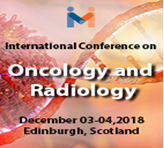Induction of Sporulation By Different Nitrogen Sources In Anabaena naviculoides, A Diazotrophic Strain Capable of Colonizing Paddy Field Soil of Punjab (India)
Induction of Sporulation By Different Nitrogen Sources In Anabaena naviculoides, A Diazotrophic Strain Capable of Colonizing Paddy Field Soil of Punjab (India)
Anabaena naviculoides is a filamentous cyanobacterium that is capable of heterotrophy and cellular differentiation into nitrogen-fixing heterocysts and desiccating thick walled spores, the akinetes. In the present study, the role of different nitrogen sources on akinete differentiation has been studied in the rice field cyanobacterium Anabaena naviculoides. All the vegetative cells transformrd into thick walled akinetes. In Chu-10 basal culture medium, the initiation of akinete differentiation was noticeable on 8th day and all the vegetative cells differentiated into akinetes by 50th day. Whereas among different nitrogen sources (ammonium sulphate, potassium nitrate, sodium nitrite, ammonium nitrate, Urea, ammonium chloride) employed, only potassium nitrate and sodium nitrite (2- 10mM) enhanced the cyanobacterial growth and akinete development of the test organism. These two nitrogen sources shortened (32-36d) the period of akinete differentiation than the control cultures (50 d) and supported 100% (at 10mM) in a span of 32-36 days of culture. These akinetes (in dry state) remained viable for 105-150 days while vegetative cells under similar storage conditions (at 40° C) lost their viability after 15 days .
 Spanish
Spanish  Chinese
Chinese  Russian
Russian  German
German  French
French  Japanese
Japanese  Portuguese
Portuguese  Hindi
Hindi 



